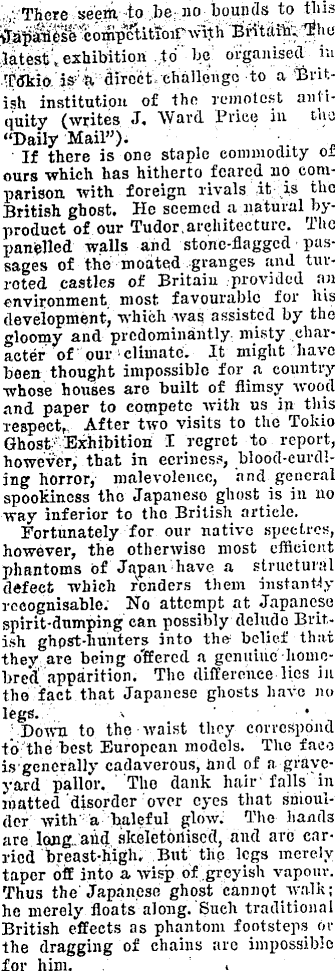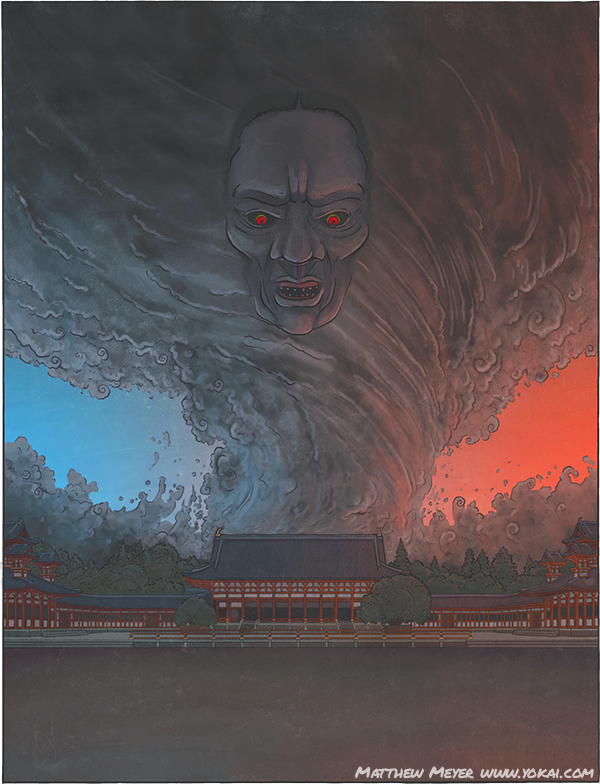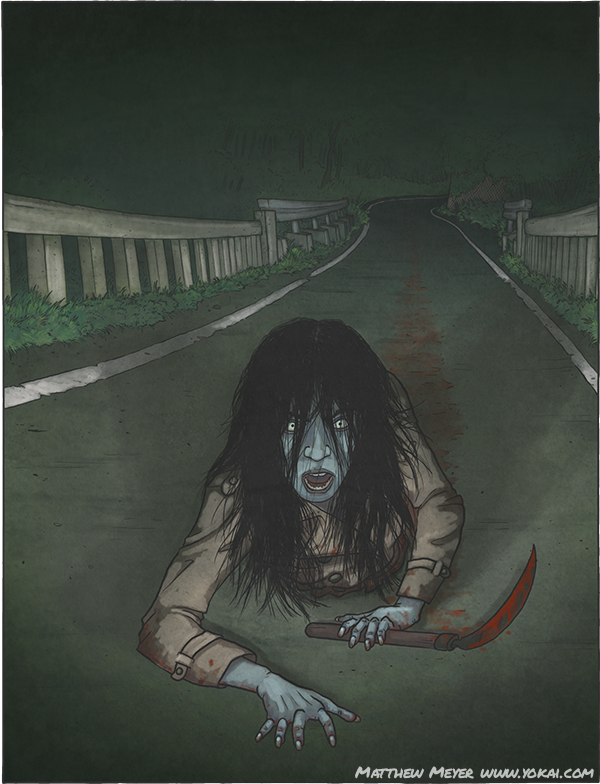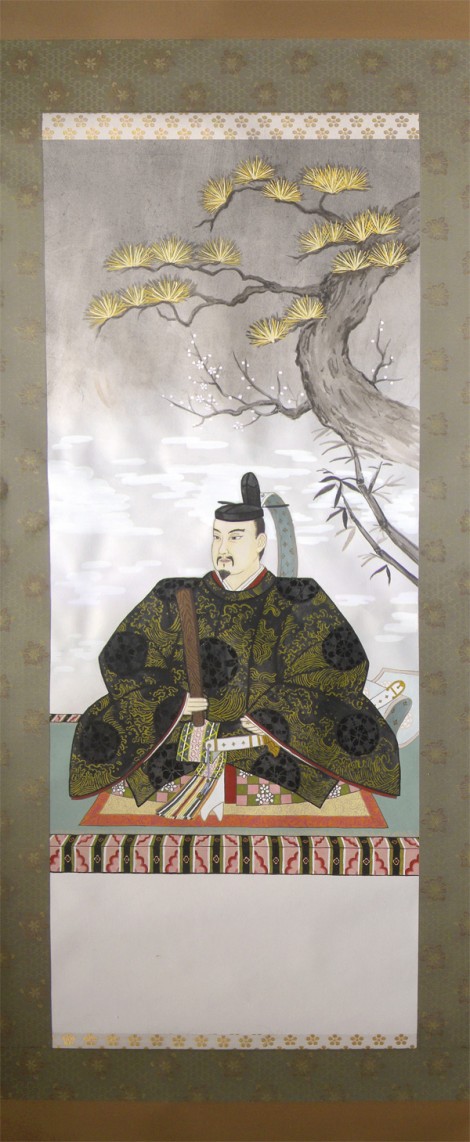I came across this on the internet recently: an article from the Daily Mail in 1933 comparing Japanese ghosts with British ones. It’s done with the usual sense of British Empire superiority, and quickly finds a way to dismiss Japanese ghosts as inferior (no feet, haunt “flimsy wood and paper” houses), but it does at least concede that Japan does have scary ghosts! I think today, most people around the world would agree that no country rivals Japan when it comes to ghosts and monsters, but in 1933 I guess the national rivalries were just too strong to get past. Here is the text from the article:
 There seem to be no bounds to this Japanese competition with Britain. The latest exhibition to be organised in Tokio is a direct challenge to a British institution of the remotest antiquity (write J. Ward Price in the “Daily Mail”).
There seem to be no bounds to this Japanese competition with Britain. The latest exhibition to be organised in Tokio is a direct challenge to a British institution of the remotest antiquity (write J. Ward Price in the “Daily Mail”).
If there is one staple commodity of ours which has hitherto feared no comparison with foreign rivals it is the British ghost. He seemed a natural by product of our Tudor architecture. The panelled walls and stone-flagged passages of the moated granges and turreted castles of Britain provided an environment most favourable for his development, which was assisted by the gloomy and predominantly misty character of our climate. It might have been thought impossible for a country whose houses are built of flimsy wood and paper to compete with us in this respect. After two visits to the Tokyo Ghost Exhibition I regret to report, however, that in eeriness, blood-curdling horror, malevolence, and general spookiness the Japanese ghost is in no way inferior to the British article.
Fortunately for our native spectres, however, the otherwise most efficient phantoms of Japan have a structural defect which renders them instantly recognisable. No attempt at Japanese spirit-dumping can possibly delude British ghost-hunters into the belief that they are being offered a genuine homebred apparition. The difference lies in the fact that Japanese ghosts have no legs. Down to the waist they correspond to the best European models. The form is generally cadaverous, and of a graveyard pallor. The dank hair’ falls in matted disorder over eyes that smoulder with a baleful glow. The hands are long, and skeletonised, and are carried breast-high. But the legs merely taper off into a wisp of greyish vapour. Thus the Japanese ghost cannot walk; he merely floats along. Such traditional British effects as phantom footsteps or the dragging of chains are impossible for him.
On the other hand the returned spirits of Japan have some, special characteristics of their own. One of these consists of a streamer of phosphorescent light, known as the hitodama. This trail of violet-tinted luminosity embodies the soul of the dead person, and always accompanies the earthly form that he resumes. I am told that at the present day there are many people in Japan who claim that when a death occurs they can see the hitodama, like an elongated balloon of purple fire, pass through the roof of the house at the moment that the soul leaves the body. These “corpse-lights,” as the Irish call them, are frequently to be noticed drifting about burial-grounds at night.
Short of meeting an actual wraith, the Tokyo Ghost Exhibition is the severest trial for one’s nerves imaginable. It is held in a huge amphitheatre, the inside of which has been cut up into rooms connected by dimly-lighted passages. Each of these rooms is furnished to represent the scene of some historic Japanese ghost-story. Life-size wax images in natural attitudes represent the human beings concerned, but the ghost is a mechanical figure which suddenly appears while you watch. Sometimes it glides out from behind a screen with a red light glowing inside the eye-sockets of its gibbering skull; or it may swoop down from the ceiling with dishevelled, trailing hair and clawing, bony fingers. Every one of the phantoms reproduced has its place in Japanese legend. Japan is a country which until sixty-five years ago had been completely cut off from the rest of the world for three centuries. There is no possibility of these spook-tales having been borrowed or adapted from, other countries. Yet their character is exactly similar to that of the ghost-stories of Europe, as if the incidents they commemorate had their origin in identical but independent experience.
Grimmest of all the horrors shown at the Tokyo Ghost Exhibition are the representations of the banshees and evil spirits that infest desolate and inaccessible places. You enter a reproduction of bamboo thicket and find gnome-like figures lurking in its depths, while hairy, snatching hands shoot out from among the leaves as you pass through.
Speaking of scary ghosts, it doesn’t get much scarier than today’s yokai, the tatarigami. This is a ghost that is so pissed off that it comes back as a great god of vengeance and destruction. These things are so powerful that shrines are built to appease them, festivals are held to honor them, and people all across Japan worship them as gods just so they won’t come back and ruin everything. A tatarigami would surely give a stuffy old British ghost something to think about… Click below to learn more about this awesome yokai:









 There seem to be no bounds to this Japanese competition with Britain. The latest exhibition to be organised in Tokio is a direct challenge to a British institution of the remotest antiquity (write J. Ward Price in the “Daily Mail”).
There seem to be no bounds to this Japanese competition with Britain. The latest exhibition to be organised in Tokio is a direct challenge to a British institution of the remotest antiquity (write J. Ward Price in the “Daily Mail”).